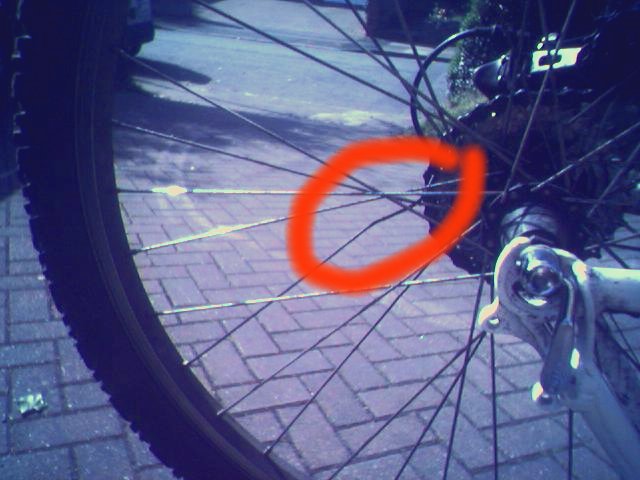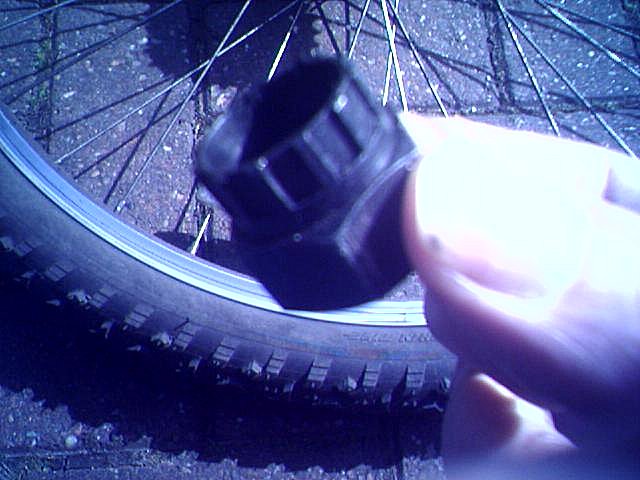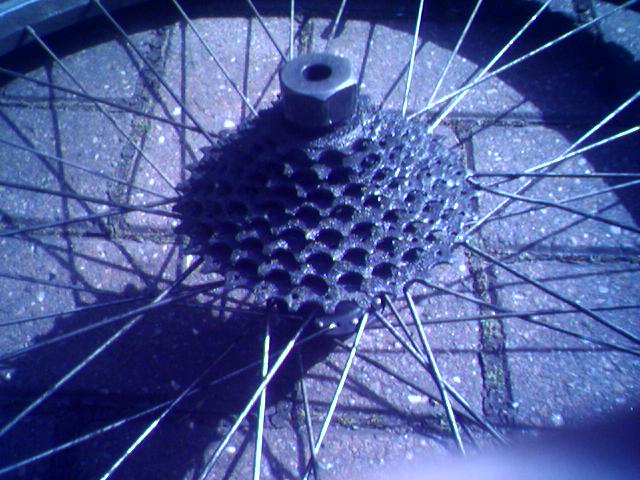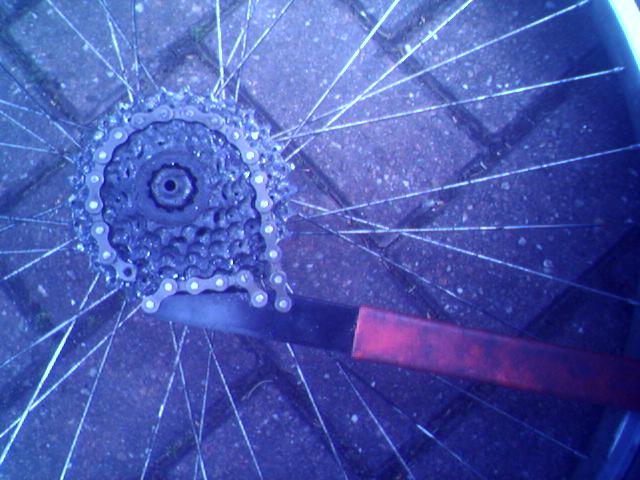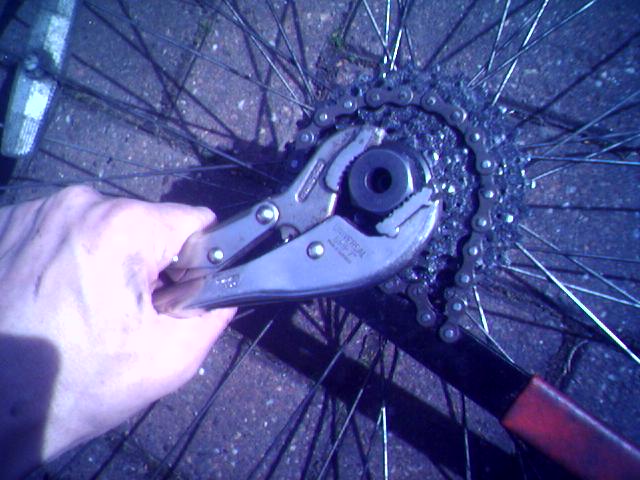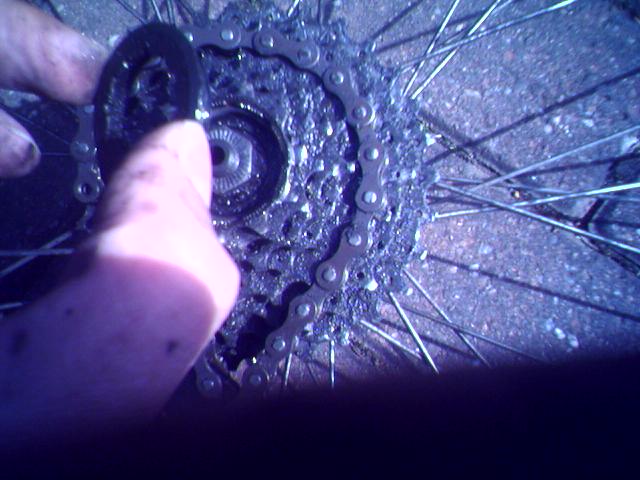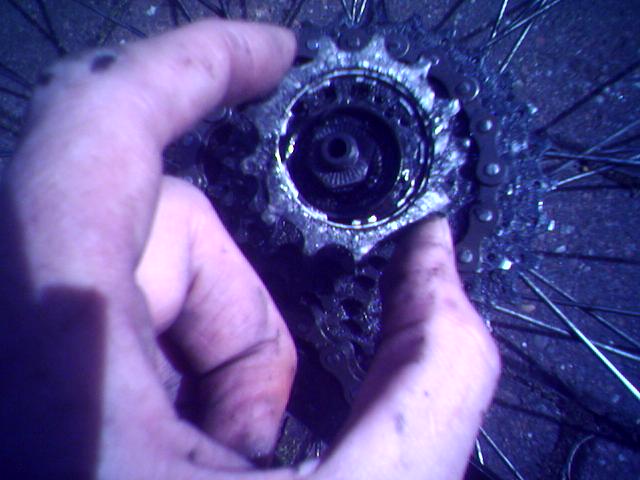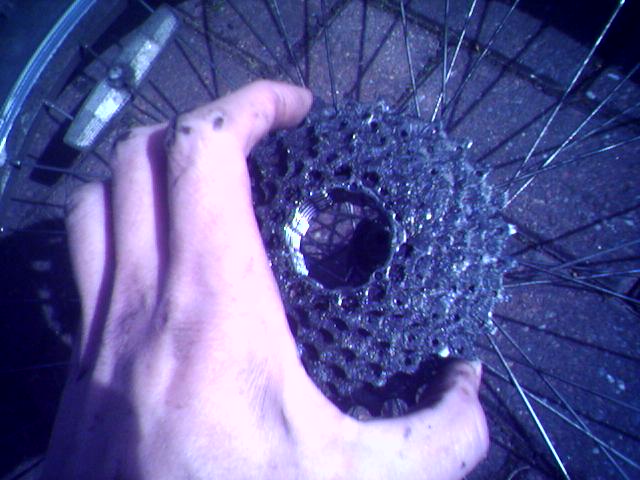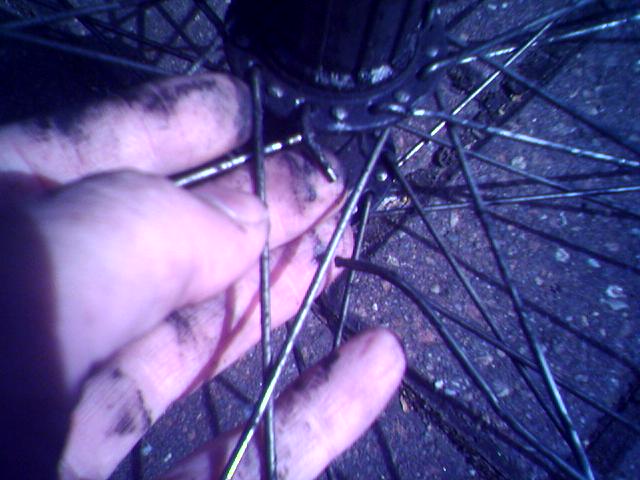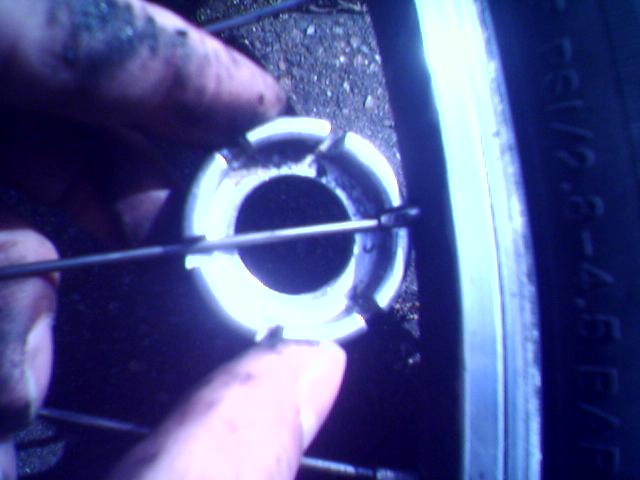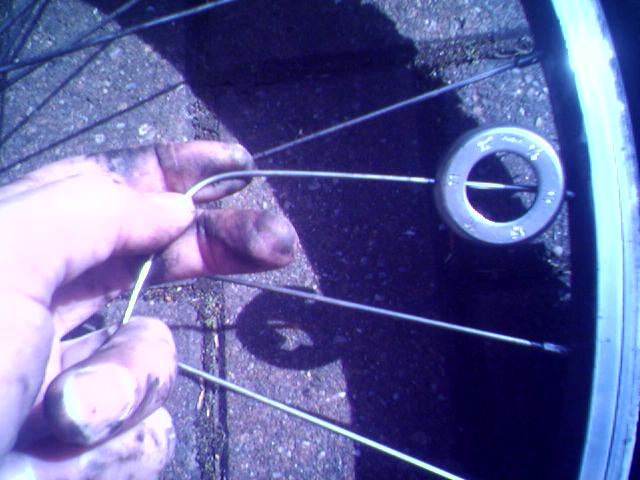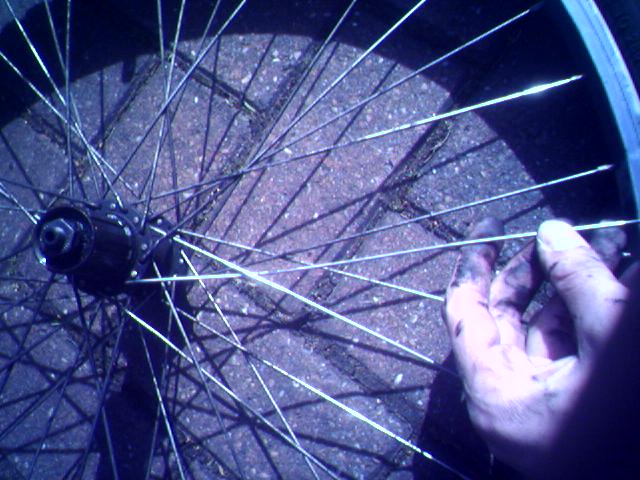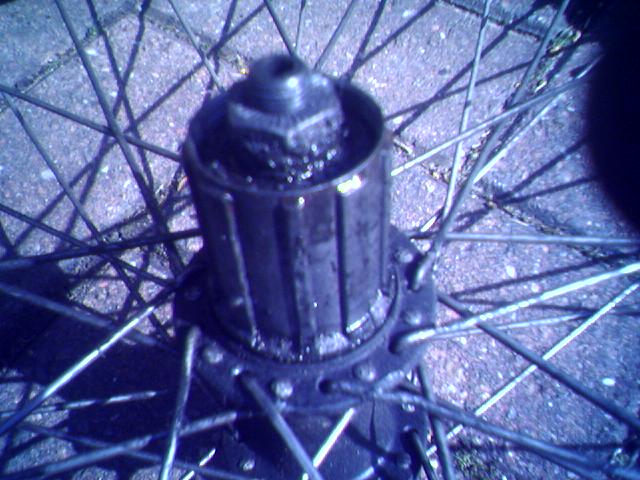Thu 05 Apr 2007
5:00PM
compton
Finally Fixing the Broken Spoke on my Bicycle
Since early last week, my pushbike has had a broken spoke: the first spoke to break on this bike. My previous bike was always getting broken spokes - for normal people, this is apparently unheard of. I put it down to a combination of the facts that I rode that bike regularly - daily to work pretty much every day for 2 years, plus pretty much everywhere else: swimming pool, pub, shops... It had done well over 1000 miles of pretty tough urban riding. Also, I weigh somewhere around 15 stone, and as it was a hybrid bike, I don't think it was really designed for people of that weight thrashing it about so much.
This bike however is a regular 26" wheel mountain bike, and the shorter spokes are tougher, so I was surprised at the broken spoke.
Fixing it isn't a major job - I need to remove the back wheel, remove the rear cassette (the gears), extract the remnants of the old spoke, and replace with a new one. I happen to have a new one that seems to be the correct length so I hope it'll fit.
compton
4:21 pm, Friday, 6 April 07
|
aeroman
3:35 am, Thursday, 15 October 09
|
Jede Creek
3:58 am, Tuesday, 30 November 10
|
Cycle Newbie
11:31 am, Thursday, 14 April 11
|
|
|
/xkcd/ Eclipse Path Maps



